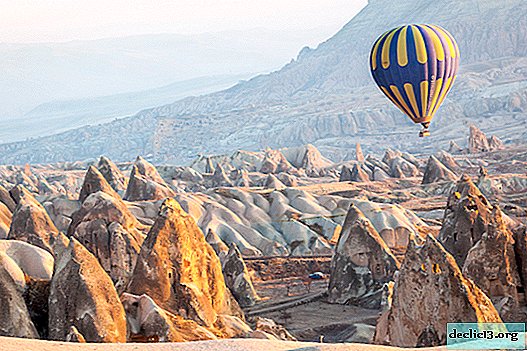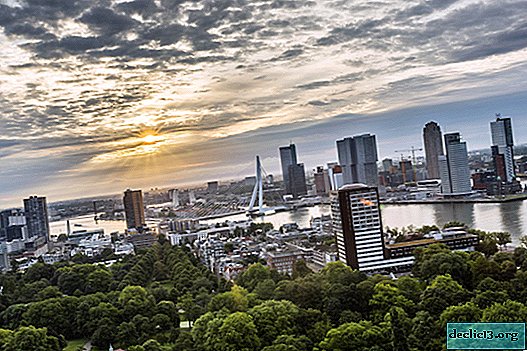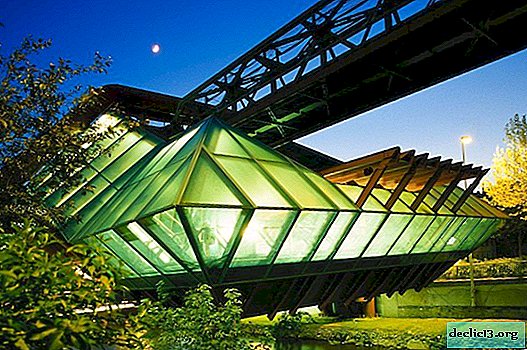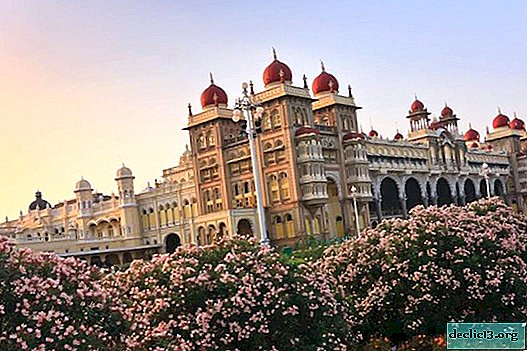Cappadocia Turkey
Cappadocia (Turkey) - a rare geological feature located in central Anatolia. This mountainous region, which has hidden underground cities, cave monasteries and churches in its bizarre rocks, bears a great historical significance, for which it was included in the UNESCO heritage list. The first settlements in the depths of Cappadocia appeared in the 3rd millennium BC, and with the advent of Christians to these lands, its mountains became a shelter for numerous temples, cells and crypts.

The uniqueness of the terrain landscapes lies in their natural origin: all these fabulous forms of the structure were not created by man at all, but by nature for tens of millions of years. Once the territory of modern Cappadocia in Turkey was covered by the languages of lava, breaking out of the active volcanic chain and settling on the earth with ash. Over time, the earth's surface rose two hundred meters, and the ash and lava transformed into volcanic tuff - a light porous rock. For several million years, wind and rain destroyed fragile material, sculpting intricate figures and rocks, pyramids and canyons from it.

Today, Cappadocia is one of the most visited attractions in Turkey, and hundreds of balloons with tourists rise up here daily. The object is surrounded by the Goreme National Park, which is an open-air museum, which included numerous rock sculptures and cave shrines. And next to the park is the village of Goreme, equipped with hotels, restaurants and shops, where travelers who come to Cappadocia stop.
History reference

The history of Cappadocia in Turkey, intertwining several peoples and empires, is quite confused, so scientists to this day can not come to a consensus on many issues. It is reliably known that already in the 3rd millennium BC. its lands were mastered by the Hutts, which were subsequently completely destroyed by the Hittites. One of the scientific theories says that it was the Hittites who gave the sights a modern name, which originally sounded like "Cattapeda" ("place below"). Other scientists claim that the name was invented by the Persians who came to these lands in the 6th century BC. and called the area "Haspuya", which translates as "Country of beautiful horses." Since the second option sounds more romantic, it is used in all directories.

In the 1st century AD Cappadocia became part of the Roman Empire, and in the 4th century its cliffs became a refuge for Christians persecuted at that time. It was they who discovered the ancient underground city of the Hittites, improved it, and began to tear out large monasteries and miniature cells from malleable tufa. In the Byzantine era, with the advent of the 7th century, Arabs began to encroach on the area, but the state gives a steady rebuff, attracting the forces of the allied Armenian empire. Nevertheless, in the 11th century Cappadocia was captured by the Seljuk Turks, who bring their traditional buildings to the local landscapes in the form of caravanserais, mosques and madrassas.

Despite the arrival of Turks in Cappadocia, Christians, most of whom were Greeks, continued to coexist peacefully with Muslims on its territory and preach their religion until the 20th century. Everything changed with Ataturk’s decision to exchange the Greeks living in Turkey for the Turks living in Greece. After this, the local monasteries fell into decay, and the remaining local residents devoted themselves entirely to agriculture. Interest in Cappadocia revived in the 80s, when Europeans, who learned about the landmark, began to actively visit central Anatolia. This marked the beginning of the development in the field of tourism, which today lives in the entire region.
What to watch
The sights of Cappadocia in Turkey cover a vast territory, and it is simply impossible to see them all in a day. So that you do not lose time, we have collected in this paragraph the most interesting objects, among which:
Goreme National Park
This open-air museum spreads over an area of more than 300 km ², represents a whole monastery complex: it consists of dozens of churches and chapels. From the 6th to the 9th centuries Goreme was considered one of the largest Christian centers, on the territory of which more than 400 shrines functioned. Many monasteries survived to this day, where the wall paintings of early Christianity, as well as Byzantine frescoes, were partially preserved. The most famous museum in the museum is St. Basil’s Church, inside which you can see the surviving images of saints and scenes from the Gospel. It is also worth a glimpse into the church of St. Barbara, painted with bright patterns, and the Apple Church with four columns and a Greek cross.
Avanos City
If you don’t know what to see in Cappadocia, we advise you to go to the miniature city of Avanos, located near the banks of the longest river in Turkey - Kyzyl-Irmak. Due to the fact that the water in the river is rich in ore and red clay, local residents managed to develop handicraft and pottery here. Underground buildings and bizarre rocks you will not find here, but you will find silence and solitude, harmoniously interwoven with oriental flavor. In addition, in the town, everyone has the opportunity to go to one of the local workshops and learn the basics of pottery. The attraction is also famous for its carpet factories, Aladdin's Seljuk mosque and the Museum of Women's Hair, whose collection contains more than 16 thousand exhibits - real curls that once belonged to girls from different parts of the world.
Uchisar City and Fortress
The quiet town, located 4 km from Goreme, is more like a small village, where there are no banks or supermarkets. The settlement itself does not cause much interest, but the Uchisar fortress located on its territory attracts the gaze of tourists. This tuff structure with a sharp top can be seen from any viewing platform of the city. The fortress appeared in the era of the Hittite Empire and was able to accommodate up to 2600 people. The structure is gradually being destroyed, and travelers here can only look at a small part of the building. It is definitely worth going up to the observation deck, from where a large-scale overview of the expanses of Cappadocia with its picturesque valleys opens.
Fairy ChimneysOne of the most popular attractions in Cappadocia and Goreme are the Fairy Fireplaces, which have long become the hallmark of the area. You can look at the unique rock sculptures resembling chimneys or giant mushrooms with cone-shaped hats in shape in different parts of the valley adjacent to the town of Zelve. Of course, romantic legends tell the tourists that magic fairies live in the pillars, but in reality, bizarre formations were the result of the destructive effects of rain and wind exerted on tuff rock.
 Underground City Kaymakli (Kaymakli Underground City)
Underground City Kaymakli (Kaymakli Underground City)Kaymakli - a huge underground complex, which has 8 floors. Each of them has dozens of tunnels and rooms that once served as warehouses, kitchens, stables and cellars. There were equipped with ventilation and water systems, there was a private chapel and pottery workshops. Here, scientists discovered a long tunnel stretching for 9 km and connecting Kaymaklı with another attraction - the cave settlement Derinkuyu. It is believed that the underground monastery could accommodate up to 15 thousand inhabitants. Today, tourists in Kaymakli are allowed to see only the first 4 floors of the city, but this is enough to penetrate the ancient atmosphere of once-inhabited caves.
 Underground city of Derinkuyu
Underground city of DerinkuyuWhen visiting the cities of Goreme and Cappadocia in Turkey, you should definitely look at the underground Derinkuyu complex. The history of the landmark begins from the 8th century BC. For a long time, Christians hid in the building, persecuted by the Arabs for their religious beliefs. To date, archaeologists have managed to unearth 11 floors that go 85 meters deep. Scientists suggest that they will be able to clear another 9 tiers.

Pashabag Valley (or Monks Valley)It is believed that up to 50 thousand people could simultaneously live on the territory of an underground attraction. As in Kaymakli, there is a ventilation system with a half-meter shaft, as well as a water supply system that provided water to all floors. Today Derinkuyu is the largest underground city in Turkey.

Pashabag is one of the most picturesque valleys of Cappadocia, which is often called the Valley of the Monks. Many centuries ago, the area became the home of Christian preachers, so today you can see the result of their activities - churches and chapels. The most famous building in the valley was the chapel of St. Simeon the Pillar, who came to Pashabag in the 5th century. The temple is located in a rocky sculpture with three cone-shaped hats. Several churches have survived here, in the walls of which ancient frescoes have survived.
Zelve Open Air Museum
If you are looking for information about what you can see on your own in Cappadocia, do not lose sight of the unique historical monument of Zelva. The first settlements within the walls of the complex appeared in the 2nd-5th centuries. By the beginning of the 11th century, Christians came to Zelva, who turned a number of its premises into churches and cells, so today you can look at their creations. Until 1952, the caves remained inhabited, but due to the gradual collapse of rocks, people were forced to leave the complex. The destruction of Zelva continues to this day, and staying within its walls is dangerous, so visiting the museum is limited. But even a review of the complex from the outside will allow you to appreciate its grandeur and scale.
Pink valleyThis is one of the most famous valleys in Cappadocia in Turkey, spreading closer to the village of Chavushin. The area got its name due to the pink hue of the rocks. In the valley there are two canyons running parallel to each other and connecting on the way to the observation deck on the Aktepe hill. One of the spurs stretches for 2 km, the other - for 3 km. In the Pink Valley there are 5 ancient temples, the oldest of which is the Church of St. Joachim and Anna, dated to the 7th century.

Balloons in Cappadocia
The most popular entertainment in Cappadocia was ballooning, during which tourists have a unique opportunity to see the lunar landscapes from a height of almost 1 km. Air tours are carried out throughout the year, but a real hot air balloon parade can be seen here in the summer, when up to 250 ships soar. Flights are usually conducted early in the morning at dawn and last from 40 to 90 minutes. More information about balloon excursions can be found in our separate article.

Where to stay
The nearest settlement to Cappadocia is the village of Goreme, and it is in it that the bulk of the hotels are concentrated. Almost all hotels in this area do not have stars, which in no way detracts from the quality of their service. It is noteworthy that many hotels are located in the rocks, so tourists have a great opportunity to experience for themselves what it feels like to live in real caves.
 Charming cave hotel
Charming cave hotelThe choice of hotels in Cappadocia in Turkey is very rich: only in Goreme you will find more than a hundred different hotels. The cost of living in a double room per day is on average 140 TL. Most establishments include free breakfast in the total amount. The most budget accommodation options will cost 80 TL for two per night, expensive - 700 TL.
Prices are for December 2018.
Find out RATES or book any accommodation using this formIn addition to Goreme, in Cappadocia there are other, more distant settlements, where you can also rent a room: these are Urgup, Uchisar, Ortahisar, Chavushin and Avanos. The cost of living in these villages varies approximately in the same range as the housing prices in Goreme.
How to get to Cappadocia

There are three ways to get to Cappadocia in Turkey: by plane, bus and by yourself in a rented car. There are two airports near the attraction - in the cities of Nevsehir and Kayseri, where flights from Istanbul are operated daily. You can read more detailed information on how to get to Cappadocia in our separate article.
Compare accommodation prices using this form
Interesting Facts
Your visit to the city of Cappadocia in Turkey will be much more interesting if you familiarize yourself with the most interesting facts about the attraction in advance:
- The total area of Cappadocia is more than 5000 km².
- Despite the desert landscapes of sights, the land here is very fertile: a large number of grapes grow here, which are supplied to almost all of Turkey. Cappadocia also grows beets, apricots, chickpeas and other crops.
- There is a legend that it was the landscapes of Cappadocia that inspired director George Lucas to create the planet Tatooine in the famous Star Wars. In addition, the area has repeatedly become the set for famous Hollywood films such as Empire of the Wolves and The Phantom Racer.
- Many locals still use the caves as their permanent home.
- In total, scientists found 36 underground settlements in Cappadocia, but today only 3 of them are accessible to tourists.

Useful Tips
To make your trip to Cappadocia without problems, we have prepared for you a series of recommendations based on the experience of travelers who have already been here.

- If you want to see absolutely all the sights of Cappadocia, then you will need at least 2 days. If you have only 1 day at your disposal, then spend it on visiting the Göreme park.
- Going to Cappadocia is best on your own, and not with a tour. Firstly, you will save money, and secondly, time. During a tour of the area, guides bring tourists to the onyx, sweets and carpet factories, which takes away the lion's share of precious time.
- If you are going to see the valleys of Cappadocia, we recommend that you read the safety rules in the highlands. Many tourists neglect elementary standards of behavior, resulting in injuries.
- The ideal months to visit Cappadocia are May, June, September and October. At this time, it is not so hot, but not cold, there is practically no rainfall and cloudiness.
- If you decide to look at Cappadocia from the basket of a balloon, then do not rush to buy a flight from the first oncoming company. It is always more profitable to purchase a ticket from the organizing company on the spot, and not through an online service.

Here, perhaps, are all the main points that should be taken into account when visiting such a picturesque place as Cappadocia, Turkey. We hope that our article has been useful to you and will help you in organizing an independent tour of the sights of the region.

















